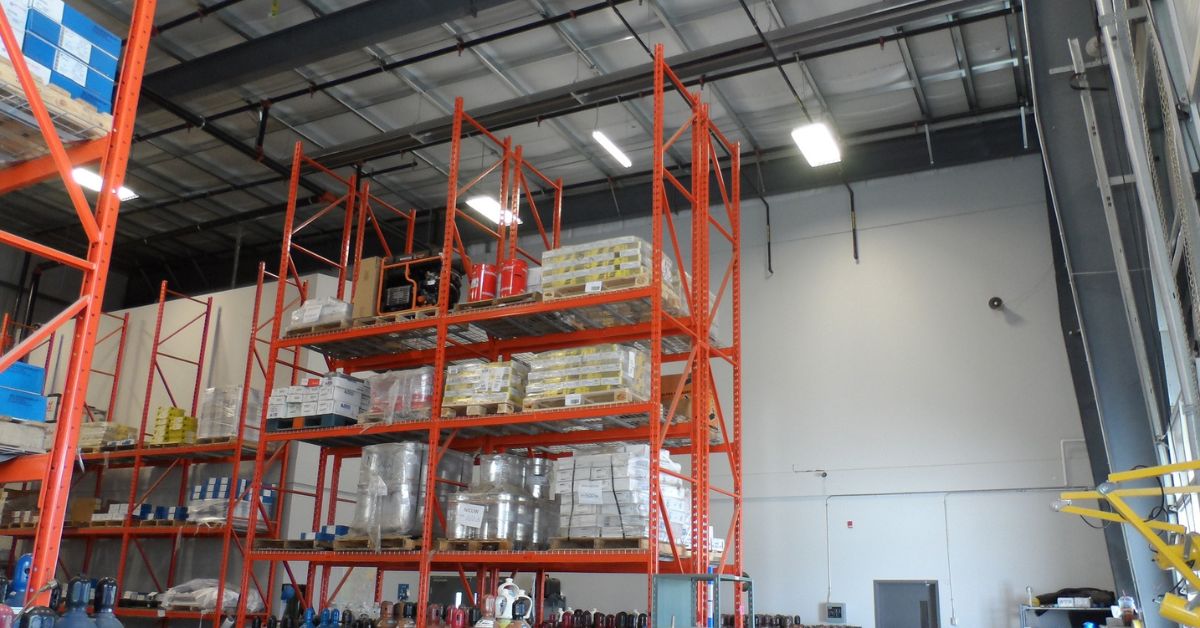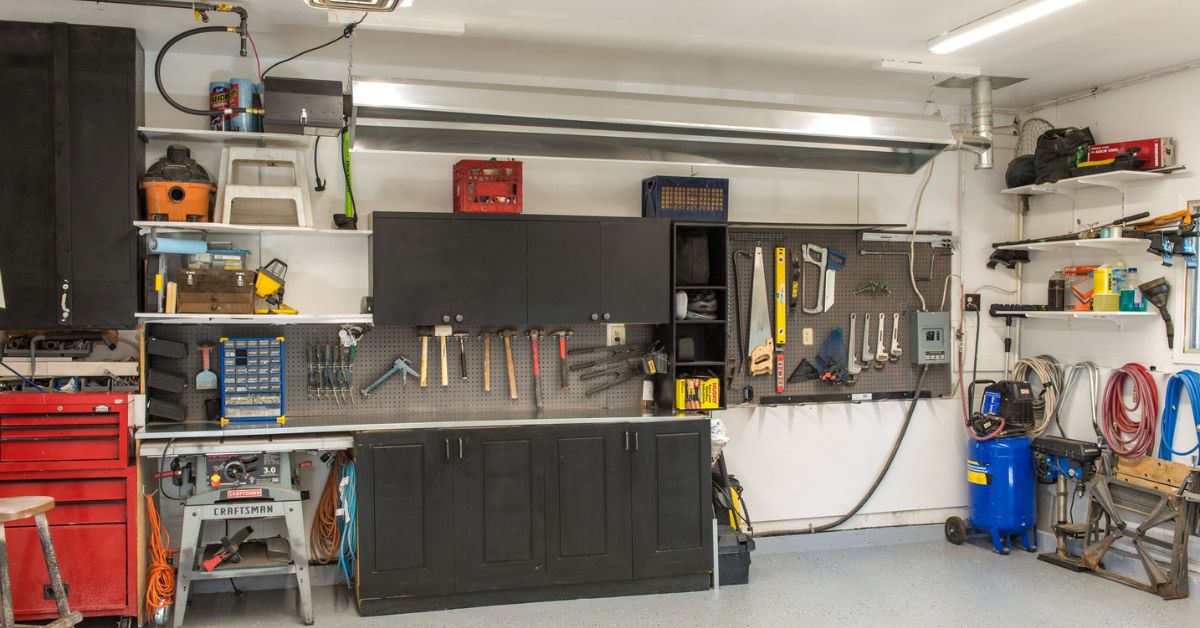For year-round productivity and success, your warehouse should have habitable working conditions that promote comfort and security. For instance, installing heating and cooling equipment will keep your staff comfortable and regulate the product temperature, especially if your warehouse contains temperature-sensitive products. Determine if infrared heating is right for your warehouse by learning more about its benefits and installation methods.
Understanding Infrared Heating Systems
Many businesses and companies use infrared heating systems to regulate the temperature in their wide or outdoor spaces. This makes the area more comfortable to work in, especially for employees navigating extensive warehouses.
How Infrared Heating Works
Infrared heating systems emit heat in the form of infrared radiation, which directly warms objects, surfaces, and people within their line of sight. Unlike traditional heaters that warm the air first, infrared heating focuses on efficiently transferring heat energy to the intended targets. This method reduces heat loss and produces fast results.
Types of Infrared Heating Systems
Infrared heating systems come in various forms to offer flexibility in a variety of warehouse layouts. Installers can mount overhead heaters at ceiling height, for example, to effectively heat large areas with minimal intrusion. On the other hand, portable infrared heating units provide targeted warmth to specific zones, which works well for movable operations.
Tube heaters, which typically reside in industrial spaces, distribute heat evenly across wider areas for consistent temperature regulation. Depending on the needs of your warehouse, revise the layout to integrate infrared heating systems effectively.
Common Applications in Warehouses
While many business owners apply infrared heating in numerous settings, its use in warehouses provides solutions for specific challenges. Large and open warehouse spaces, even when properly insulated, might suffer from inconsistent temperatures due to their airflow dynamics. Infrared heaters excel at delivering direct, even warmth to occupied zones without being affected by drafts or open doors.

Comparing Infrared Heating to Traditional Systems
Compared to HVAC systems, infrared heating offers more flexibility for warehouse managers looking to regulate the temperature in their space. By identifying the differences, you can assess which option provides the most efficient and cost-effective solution for your warehouse requirements.
Energy Efficiency and Cost Savings
Infrared heating systems provide energy-efficient heating for warehouses. Because of the workload dynamics of warehouses, your company may leave doors and windows open to conduct operations. These drafts could force the HVAC system to work harder in order to maintain consistent temperature levels.
HVAC systems expend energy by warming the air. Infrared units cut energy waste by focusing heat directly where needed. To save money on utility costs, install an infrared heating system, so you can adjust the space’s temperature levels, as needed.
Maintenance Requirements
Traditional HVAC systems often include multiple moving components, which can increase maintenance demands over time. Infrared systems, however, are comparatively simpler, with fewer moving parts. With reduced routine cleanings and inspections, you’ll be able to minimize downtime in your warehouse.
Temperature Control and Consistency
While traditional heating systems cycle on and off to regulate temperatures, this method sometimes results in fluctuating comfort levels. Infrared systems maintain consistent warmth by continuously radiating heat to people and objects. This approach keeps the warehouse comfortable for employees and protects temperature-sensitive products.
Key Benefits of Infrared Heating for Warehouses
To find out if infrared heating is right for your warehouse, assess how these systems can support the unique challenges your company faces. Whether you manage a compact space or a sprawling distribution center, these advantages resonate across various operational contexts.
Enhanced Comfort for Workers
A comfortable work environment is a productive one, so give your employees a space that accommodates them. Infrared heaters provide even and consistent warmth throughout the warehouse so employees remain comfortable during colder months. This improvement boosts morale and promotes workforce efficiency.
Reduced Heat Loss
Infrared systems excel in minimizing heat loss, even in spaces with strong air circulation or open doors. If your company suffers from unregulated or uninsulated temperature zones, investing in an infrared heating system could keep the space at room temperature, even during snowstorms or other hazardous weather conditions.
Compatibility with Industrial Needs
Infrared heating systems work best in industrial settings. Their robust build quality enables them to withstand demanding environments such as manufacturing plants, logistics hubs, and multizone warehouses.
Additionally, their flexibility allows customization to meet varying heating needs. For warehouses that use heavy-duty equipment and machinery, these durable systems will provide the heating solutions you need without worry.

Factors To Consider Before Installation
While infrared heating offers numerous benefits, you may need to assess your workplace to determine if the system is the right fit for your warehouse. Consider these requirements and layout designs to finalize your infrared heating system selection.
Warehouse Layout Assessment
Every warehouse presents unique structural layouts, which dictate how efficiently infrared heaters can function. Open-concept spaces with high ceilings may benefit from strategically mounted overhead units. Conversely, segmented areas requiring zoned heating may require portable heaters or tube systems.
Conducting a thorough assessment of your warehouse’s spatial needs will help you determine what installation method works best for your company. Consider all the open spaces where you can mount your system and assess whether you’ll need additional installations for efficient heating.
Energy Source Requirements
Infrared heating systems use a range of energy sources, including electricity and natural gas. How you choose to power your system will depend on the warehouse’s current energy infrastructure and the availability of local resources. For an accurate and safe integration, consult a professional installer to discuss the energy requirements to prevent disruptions.
The flexibility of infrared heating allows for scalability as your business grows. Factor in potential future expansions so that your heating infrastructure remains compatible with evolving operational demands.
Compliance With Safety Standards
Infrared heaters must meet regulatory safety standards to ensure employee well-being and operational continuity. If your warehouse fails to comply with these health and safety guidelines, your company may be susceptible to unnecessary fines and legal issues. Proper installation, regular maintenance, and adherence to guidelines mitigate risks associated with equipment malfunction.
Although infrared systems have fewer moving parts than traditional alternatives, they still require regular maintenance to perform at optimal levels. Scheduling routine inspections and cleaning allows the system to operate safely and efficiently.
Regulate the temperatures in your warehouse by installing reliable equipment before winter. At Calcana USA, we provide gas-powered infrared heaters that work well for both expansive spaces and smaller areas that require heating solutions. For more information regarding our products and installation methods, contact our team today!




Leave a comment
This site is protected by hCaptcha and the hCaptcha Privacy Policy and Terms of Service apply.